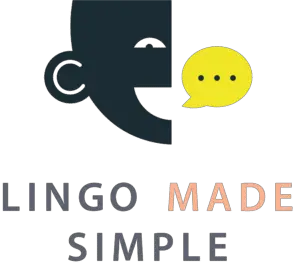Are you feeling hungry today?
When you need to quench that hunger, you’ll decide to eat something. If that action doesn’t make your stomach feel good, it’d be possible that you regret what you ate.
You could also say that you had eaten yesterday, but it is time to eat again today.
The word “eat” is typically used as a verb to describe the act of chewing and swallowing food. How that action gets described depends on whether the sentence is used in the past, present, or future tense.
When you can sort out that information, you’ll know the differences that indicate when to use the words eat, ate, or eaten.
Eat Ate Eaten: What to Know About Eating in the English Language
When you “eat” something, this verb happens in the present tense. If you “ate” a snack, the action occurred in the past. When you have “eaten” something, what you’re using is a past participle that must get used with another word. The most common pairings with “eaten” are “had” and “have.”
The easiest way to remember the differences between eat, ate, and eaten is to think about the time the action happens and who is doing it.
If I am hungry right now, I will eat a snack. You could also say that the entire family is about to sit down to eat their dinner.
The only time the word “eat” gets used alone to describe this action is when it happens in the present tense.
You can still use the word “eat” to describe a future meal, but it must contain a modifier based on how the sentence gets worded.
If I know that I’ll be hungry at dinner, I could say that I “will eat” my food at that time.
When someone tells me that they plan to start serving their meal at six o’clock, I’d say that I “would eat” then if I can make it.
Although other future modifiers are technically correct, most people use “will” or “would” to complete the thought.
When Should Present Tense Be Used in Writing or Speaking?
Although it seems simple to say that past, present, or future tense should describe specific actions during those times, the wording, sentence structure, and spelling don’t always align with those concepts.
The simple present tense is the most active form of description in the English language today. We use it to describe general truths, unchanging situations, fixed arrangements, or specific habits.
When you describe an action using the simple present tense, only the base form of the verb is necessary. That’s why you’d say, “I eat food.”
If you’re using third-person language instead of first-person descriptions, you’d need to pluralize the verb. For this example, you’d say, “He eats food.”
We use the simple present tense for specific reasons.
| Habit Descriptions: | • You could say that she only eats eggs for breakfast to use this option for the simple present tense. |
| Repetitive Actions: | • For this example, you’d say that he eats ham every morning when school is in session. • It’s different from a habit because it has a definitive beginning and ending to the behavior. |
| General Truths: | • Here, we would say that “Everyone eats food to stay healthy.” • In the first-person phrasing, it would be more appropriate to say, “I eat food to stay healthy.” |
| Directions or Instructions: | • If someone has a problem with certain foods because of an allergy, a doctor might say, “I recommend not eating these specific foods to avoid having a bad reaction.” • In this example, “eat” becomes a noun, which is why it gets “ing” as an ending instead of “s.” |
| Fixed Arrangements: | • When you eat at the same time every day, you’d have an appointment with your food that qualifies for this category. • Someone could say, “I eat my lunch daily at 1 PM because of my work responsibilities.” |
| Future Constructions: | • Parents use this option frequently when talking to their kids about eating their vegetables. • If you were to say, “I’ll give you dessert after you eat your broccoli,” you’d have an example of this example. |
The present or simple present tense should be a priority in your writing. That structure creates an active voice that engages the reader more often.
If you use “had” or “have” eaten, the phrasing turns passive. Although there’s nothing wrong grammatically with saying that someone “had eaten” their vegetables, the description is less appealing with the passive structures than it is with active ones.
When you use “ate” to describe the act of eating, it’s reserved for past descriptions. You might say, “I ate that cake on my birthday, and it was good.”
You could also say, “He ate my birthday cake without permission.”
That’s how you can quickly distinguish between using eat, ate, and eaten when describing the action of consuming food.
When Should I Use Past Tense in My Writing?
All past tense forms help talk about actions or events that happened before this exact moment in time. With most verbs, you can add a simple “ed” to the end of it to create this outcome. “Eat” is different because of how the word is structured for sentence inclusion.
You might say, “I walked to the store.” That phrase would tell someone that you went to the store earlier and had to walk to get there for some reason.
The word “eat” follows a different rule. You wouldn’t say that you “eated” your dinner because the past tense is “ate.”
That’s also why you wouldn’t say that you “ated” your dinner. Since “ate” is already in the past, you don’t need to duplicate the expression to get your point across.
The reason why we use “eaten” is because it is a past participle tense for the same action.
When you can remember the rules of eat, ate, and eaten for your writing or speaking, you’ll have more accuracy to describe the act of eating.


